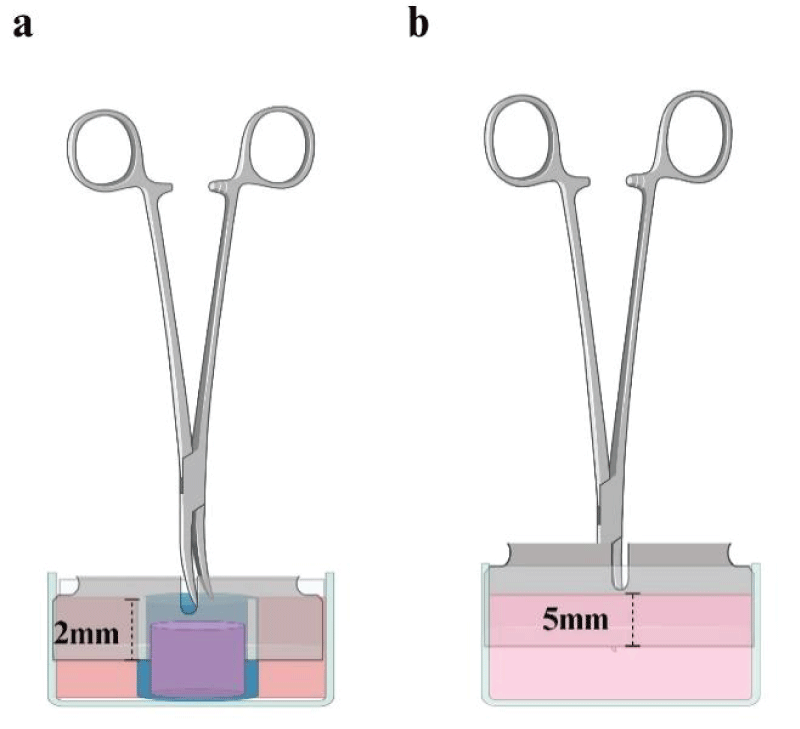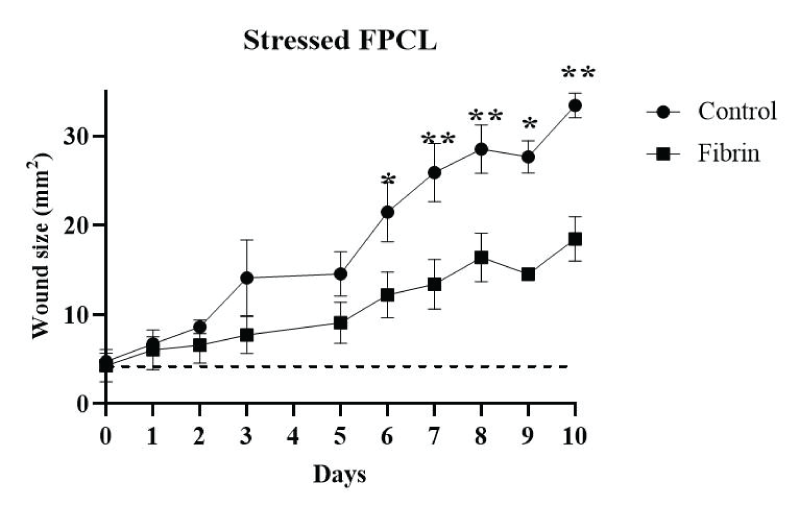Abstract
Incisional acute wounds of the skin are characterized by a rapid biomechanical response by stromal cell contraction that joins the wound lips through the fibrin cloth. In this work, we have performed an in vitro model using Fibroblast-Populated Collagen Lattices (FPCLs) that partially mimic that physiological process. Injured FPCLs under relaxed or stressed conditions were evaluated over time, and cross-sections of the lattices were stained with picrosirius red. Wounds filled with fibrin in relaxed FPCLs were closed earlier than controls, the fibrillar pattern of the collagen lattice was different between the wound and the edges of the lattice. On the other hand, stressed FPCLs did not close wounds, even those filled with fibrin, because the tension generated from the lattice borders maintained high tension towards the wound. Controls or fibrin-treated stressed FPCLs, showed high tension in the wound matrix, characterized by the high packing of collagen observed like yellow-red birefringent fibers when stained by picrosirius red. Despite wounds that remain open, fibrin-treated FPCLs exhibited less wound area than controls. With this work, we have demonstrated that FPCL models can be used to study wound closure, mainly when they are improved with other elements of the wound environment that allow us to analyze the biological process.











